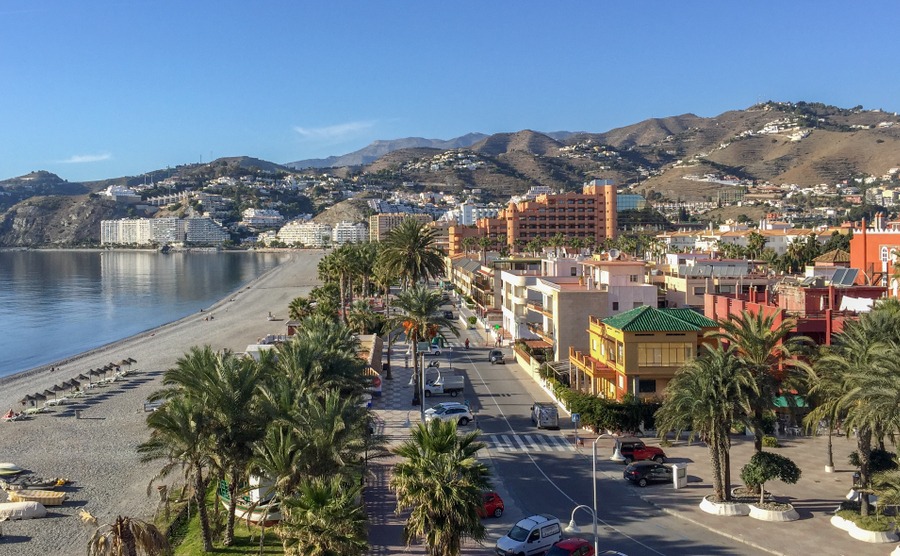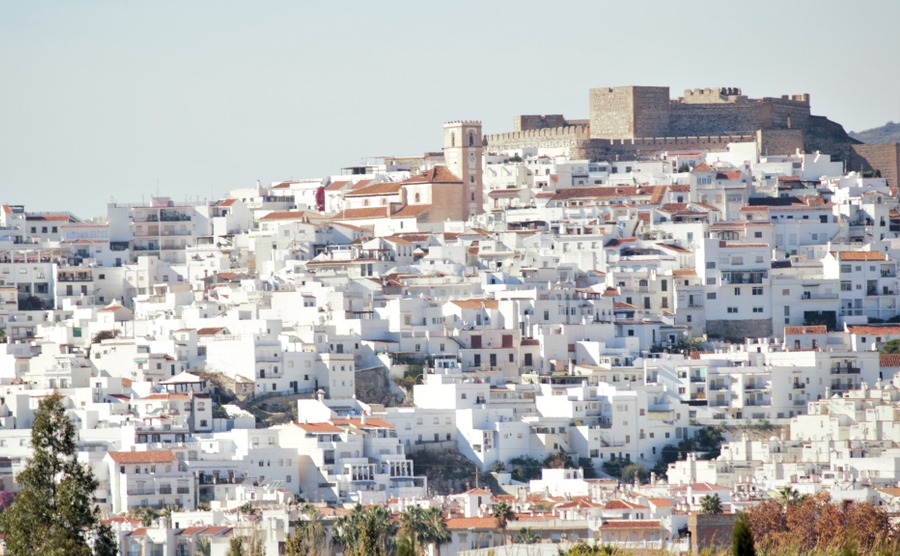It is possible many people haven’t heard of Spain’s Costa Tropical. It lies in southern Spain and is the coastal region of the province of Granada in Andalusia. Often mistakenly thought of as part of the Costa del Sol, it’s very different in character. There is very little flat land and the Sierra Nevada mountains even reach the sea at some points. This stretch of coast is just 19 kilometres long, but is still home to 26 beaches.
The Costa Tropical is predominantly an agricultural area dotted with picturesque towns and villages. Since there is little flat terrain, it hasn’t experienced the same mass development as other regions. It also differs in that it is greener than its neighbour due to the mountains reaching the sea and higher rainfall.
Spain Property Guides can put you in touch with the very best lawyers, estate agents and international payments specialists in Spain, for total peace of mind. Get in touch with your Golden Three here.
These mountains also protect the coast from harsh weather, creating a micro climate which provides temperate winters and summers. This makes it much cooler than other parts of southern Spain, up to 10°C cooler than inland Granada, for example.
The Costa Tropical is predominantly an agricultural area dotted with picturesque towns and villages.
English is spoken in the larger towns but don’t expect people in the villages to be fluent. Unlike the Costa del Sol, the Costa Tropical has more Spanish than English speaking residents and visitors. In fact, many expats commute to Granada for work, where job opportunities are more widely available. This Costa is one of the least expensive for property and general living, which is yet another of its attractions.
Search for properties in the Costa Tropical.
Find homes in Costa Tropical via our property portal.
History
The Costa Tropical has much historical interest, including some magnificent cave paintings and Roman antiquities and ruins. With many important vestiges of the Moorish occupation of Spain. Almuñécar, for example, was originally the main access point into Iberia over 1,000 years ago.
Infrastructure
The A7 motorway has seen a section added from Nerja in the province of Málaga to Taramay, near to Almuñécar. This has made accessing other parts of Spain much easier.
If you’re preparing to come over to Spain to look at properties as soon as flights resume, know what to look for by reading our free guide, Your Viewing Trip.
Granada has a small airport, but most people use the international airport at Málaga. Flights are often more frequent and cheaper from here. It is around 79 kilometres from Almuñécar. There is also an excellent fast train service from Málaga to Madrid and from there to Barcelona. Alsa runs a regular bus service to the Costa Tropical from cities such as Málaga, Almería and Granada.
Cuisine
The cuisine served on the Costa Tropical has been influenced by the civilisations which have settled there over the centuries. Being a coastal region, fish is one of the main ingredients, with sardines espeto a speciality. They are cooked in something resembling a boat piled high with ashes.
Motril produces the only European rum made from canes. Plus there is good wine made in the region too. Paella is on the menu as well as andalusian gazpacho, but this coast is perhaps best known for the many fruits grown here such as avocados and mangoes.
Local desserts lean towards the moorish tradition, so are made with sugar and almonds. A popular example is Torta Real. If you love ice cream, there are numerous artisanal, homemade ice cream shops known as heladerias, to explore, with leche merengada a particular favourite.
Towns
Almuñécar
Almuñécar lies between Motril and Nerja and is home to around 30,000 inhabitants. The Phoenicians came here before growing into an important fishing port under the Moors. The Romans also settled in the area, using it as a centre for fish salting. The Visigoths paid a visit but the town remained very Roman throughout their stay while its fish industry diminished. Today Almuñecar remains home to a thriving fishing port, and excellent restaurants where you can sample the daily catch.

Almuñecar
In recent years the town has seen an increase in foreigners buying property, while still remaining a popular resort with Spanish people. The town has an impressive botanic garden, Parque del Majuelo and an imposing castle which overlooks it.
Getting here is a breeze. It is located just 50 minutes from the airports in Málaga and Granada, and 75 minutes from the ski slopes of the Sierra Nevada mountains. It also hosts a famous jazz festival, considered to be one of the best in Spain. Plus there is an international school which uses the Cambridge examination system.
Motril
Motril is the regions second town. It is home to some nice beaches and a major fishing port. With a population of 66,000, Motril offers everything you might want: excellent shopping, fresh produce markets, fish market and a bi-weekly general market. There are plenty of bars and restaurants, ranging from the more traditional to the contemporary. The town also has a lovely park with a lake called Parque Pueblos de las Americas, where you can partake in leisure activities.
There is a theatre, cinemas and plenty of cultural events to enjoy, which has a strong tradition of flamenco. You’ll also find one of the few golf clubs on this stretch of coast located here.
La Herradura
The town of La Herradura lies in a pretty horseshoe bay. This sheltered bay is perfect for water sports of all types and in particular scuba diving. It is one of the main holiday destinations on the Costa Tropical and has an interesting histor. Settlers from the Bronze Age, Visigoths and Moors cultivated grapes here to become raisins, and apparently they were considered the very best in the world at that time.
The town of La Herradura lies in a pretty horseshoe bay.
The population is quite small, just 4000, and the town has 2 kilometres of dark sandy beaches served by a promenade lined with bars and restaurants. Life here will appeal to those seeking a quiet life, away from the bustle of places like Nerja. It’s home to a language school and a small British community.
Salobreña
Salobreña is considered to be the jewel of the Costa Tropical, with its whitewashed houses, magnificent flowers and Moorish castle. Journeys to Granada take just 45 minutes and another 20 minutes or so will lead you to the ski resorts of the Sierra Nevada. There is no high rise development or mass tourism, and in many ways is one of Spain’s secret coastal havens.

Salobreña
The town is more or less divided into two, the old town up on the hills and the new town which lies below and spreads to the seashore. There are several urbanisations in the lower town. Salobreña is alive all year round and hosts concerts, plays and has a cinema.
For those who like sports, you can find tennis, golf, fishing, water sports and mountain biking close by. For those who seek good food, there are several excellent restaurants and tapas bars to explore. Craft beer and organic food is available in the town and of course there is an excellent market. It is an ideal place for those looking for a peaceful retirement but with some culture and ease of access to airports and larger towns.
Villages
The Costa Tropical is made up mainly of small towns and villages rather than large resorts and cities, making it generally more peaceful than its neighbour to the south, the Costa del Sol. For some, the lack of English might be a drawback but the people are welcoming and learning Spanish is a wonderful way to immerse yourself in a new culture. You will find much more authentic surroundings around here.
La Mamola and La Rabita are well worth a visit. Torrenueva, close to Motril, now has Blue Flag beach status, and the small town of Calahonda (not to be confused with the larger and well known Calahonda on the Costa del Sol), has a perfect beach for small children with warm and shallow waters.
Find your perfect property in the Costa Tropical on the Spain property portal.











